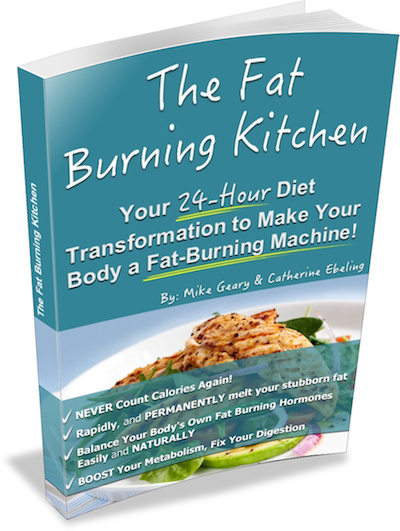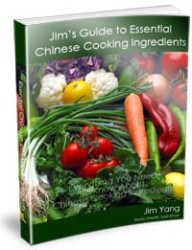Question by dreamgirl L: What are the best foods for diabetics to eat?
My mother age 50 was newly diagnosised with diabetes and I wanted to hear from other diabetics or those who live with a diabetic about misconceptions and the best foods to eat to maintain a heathy blood sugar. Does anyone know if splenda products are good substitues? Any suggestions?
Best answer:
Answer by meeomyo
My wife has had diabetes for years and we have found one of our best resources is a Registered Dietitian.We also have found that a
Weight Watchers cook book is good also.
What do you think? Answer below!
 Fat Burning Kitchen:Never count calories again
Fat Burning Kitchen:Never count calories again Low Glycemic Veggies
Low Glycemic Veggies 100% protein quinoa grain
100% protein quinoa grain Daily Antioxidant/Natural Remedies
Daily Antioxidant/Natural Remedies Get Truth About Healthy Teeth
Get Truth About Healthy Teeth Healthy Cooking
Healthy Cooking
5 comments
No ping yet
mimi222 says:
June 3, 2014 at 2:12 am (UTC 0)
My mother is a diabetic and she uses Splenda in her coffee. She likes it because it is a sugar substitute and she cannot live without something sweet. I would only recommend using it in coffee but not buying the big bulky pack and making a cake out of it. Diabetics need to watch their carbohydrate intake and also eat in moderation. Do not drink any diet cokes, it is not a substitute for diabetics. Exercise also helps diabetics maintain their blood sugar. This website has a lot of helpful information: http://www.endocrineweb.com/diabetes/treatment.html
dolphin says:
June 3, 2014 at 2:39 am (UTC 0)
There is a wealth of information on the internet about Diabetes and the Diabetic Diet.
Weight Watchers is a good one to follow.
I suggest, however, that you contact your doctor or local hospital and ask if they offer Diabetes Education classes. These are EXTREMELY helpful.
I have been with my Dad when he was diagnosed and again as a refresher, and still learned more! These classes will really help you understand the science of your body, how the pancreas and insulin work, AND IT WILL INCLUDE foods that are best for Diabetics to eat.
Here are a few resources that I have used:
Tin S says:
June 3, 2014 at 2:47 am (UTC 0)
Low Glycemic Index foods are in order. They raise your blood sugars slowly. Here is a list of 2,480food that are rated. It’s a simple and easy way to diet. But it also must be your bible for eating for the rest of your life. This table includes the glycemic index and glycemic load of more than 2,480 individual food items. Not all of them, however, are available in the United States. They represent a true international effort of testing around the world.
The glycemic index (GI) is a numerical system of measuring how much of a rise in circulating blood sugar a carbohydrate triggers–the higher the number, the greater the blood sugar response. So a low GI food will cause a small rise, while a high GI food will trigger a dramatic spike. A list of carbohydrates with their glycemic values is shown below. A GI is 70 or more is high, a GI of 56 to 69 inclusive is medium, and a GI of 55 or less is low.
The glycemic load (GL) is a relatively new way to assess the impact of carbohydrate consumption that takes the glycemic index into account, but gives a fuller picture than does glycemic index alone. A GI value tells you only how rapidly a particular carbohydrate turns into sugar. It doesn’t tell you how much of that carbohydrate is in a serving of a particular food. You need to know both things to understand a food’s effect on blood sugar. That is where glycemic load comes in. The carbohydrate in watermelon, for example, has a high GI. But there isn’t a lot of it, so watermelon’s glycemic load is relatively low. A GL of 20 or more is high, a GL of 11 to 19 inclusive is medium, and a GL of 10 or less is low.
Foods that have a low GL almost always have a low GI. Foods with an intermediate or high GL range from very low to very high GI.
Both GI and GL are listed here. The GI is of foods based on the glucose index–where glucose is set to equal 100. The other is the glycemic load, which is the glycemic index divided by 100 multiplied by its available carbohydrate content (i.e. carbohydrates minus fiber) in grams. (The “Serve size (g)” column is the serving size in grams for calculating the glycemic load; for simplicity of presentation I have left out an intermediate column that shows the available carbohydrates in the stated serving sizes.) Take, watermelon as an example of calculating glycemic load. Its glycemic index is pretty high, about 72. According to the calculations by the people at the University of Sydney’s Human Nutrition Unit, in a serving of 120 grams it has 6 grams of available carbohydrate per serving, so its glycemic load is pretty low, 72/100*6=4.32, rounded to 4.
The Glycemic load is the most important. Here are a couple of tidbits I thought I would throw in.
Use ¼ to ½ teaspoon of cinnamon per day. Add it to your coffee, oatmeal, smoothie, or wherever you find it palatable.
If you already suffer from diabetes, be sure to stay on a regular schedule with your cinnamon usage so that your blood sugar levels don’t yo-yo.Use the same amount at the same time every day so that you can get a sense of how cinnamon affects your own personal blood sugar readings.
Use the powdered spice or a cinnamon stick. Cinnamon pills are also available, and can be found easily via an online search. MHCP is water soluble and is not found in cinnamon oil.
Lime and lemon juice delay the digestion of starches as does vinegar. I’ve found that 2-3 tablespoons of lime or lemon juice reduces my post prandial BG response by 10-20 points. Rick Mendosa’s site has a lot of material on acids in the diet. Take a look at http://www.mendosa.com/acidic_foods.htm .
Keep blood sugars in normal range and avoid these complications. Blindness, Neuropathy, Kidney failure and Heart complications.
Good Luck to your Mom. Take care! Tin.
bledi d says:
June 3, 2014 at 3:02 am (UTC 0)
Since our body have 70% water the best food is to eat those kinds of foods that contain 70% water.
Those kinds of foods are fruit and vegetables.
this is the best diabetic diet.
Ariel M says:
June 3, 2014 at 4:02 am (UTC 0)
A diabetic patient must eat lots of fruits and vegetables in which fibre content is very high. Such type of food lowers the requirement for insulin, the reason being it releases energy into the body cells slowly. A high fibre diet means more chromium, which is very helpful in the treatment of diabetes.
As for vegetables, onion, garlic, ginger, radish, spinach, kale, cucumber, carrot, tomato, cabbage and cucumber are excellent in the treatment of diabetes. Moong, kidney beans which have been sprouted, and unripe banana which is cooked, are also recommended.
Fenugreek seeds which have been soaked in water are good for diabetic patients.
For fruits, take guava, Indian blackberry (jamun), fig, kiwi fruit, apples, citrus fruits and pomegranate juice. Let these things be a part of your morning breakfast. Since, fruit juice is high in fructose (fruit sugar) and can cause blood sugar levels to rise quickly, it’s best for diabetics to drink fruit juice with a meal and avoid having more than one small glass a day.
Replace white sugar with palm sugar, dates and honey, if you want to have something sweet.
Unpolished rice, sprouted grain should be taken in moderate quantity.
Fats like olive oil and peanut oil are good in diabetes.Drink plenty of water, at least 8 to 10 glasses per day.
Single helping of fish or seafood, as it provides omega 3 fatty acids.
Condiments such as pepper, chilli, mustard, herbs and spices.
Raw vegetables need to be taken in large quantity, as cooked food raises the level of blood sugar fast.
Eat non-fat dairy such as skim milk, non-fat yogurt and non-fat cheese, plain yoghurt, avoid cottage cheese a sit is high in carbohydrates.
Some herbs and vegetables are specifically prescribed for diabetes, like Bitter Gourd and bitter melon juice.
What to avoid?
Processed foods, white sugar, white flour and junk food, must be totally given up. Avoid sweets, glucose, fruit sugar, cakes, ice cream, chocolates, soft drinks, cream and fried foods.
Anything that contains harmful preservatives and too much salt should be avoided.
Avoid smoking and alcohol.
Try and abstain from sweets, ice-creams and chocolates, including the so-called sugar-free types.
Foods made from white flour, rye, corn, polished rice, bread, pasta, pastry, cakes, biscuits, pies.
Starchy vegetables such as potatoes in particular; and go easy with beet, carrots, peas, beans.
Avoid concentrated dairy products, such as khoya, kheer, cheese, cottage cheese.
Fruits such as bananas, mango, grapes, strawberry, custard apple, date.
Cottage cheese (except in small amounts)
Avoid commercially packaged foods such as fast foods, chips, ready-to-eat foods, snack foods and “health foods.”
Fruit juices, as these are much higher in carbohydrates than fresh fruit. Moreover, they also lack in dietary fibre.